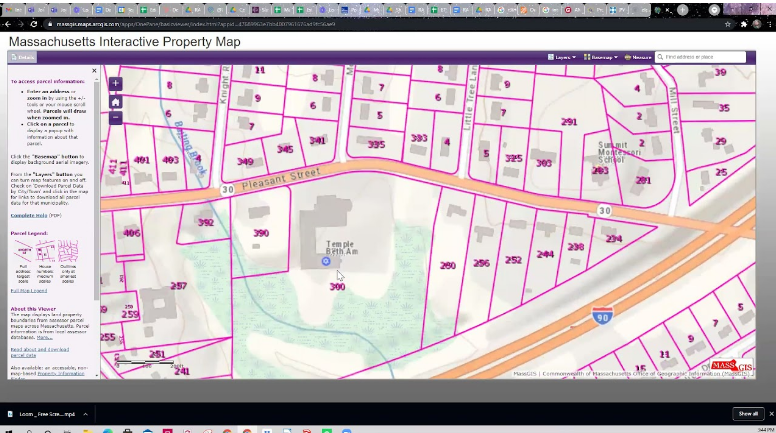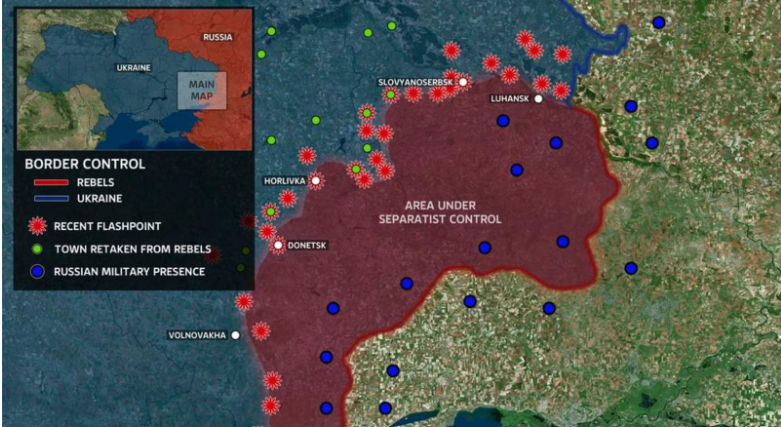Urban planning is the process of designing and regulating the use of land, resources, facilities, and services in a city or metropolitan area to manage its development effectively. As cities grow and change, urban planners face complex challenges, such as balancing population growth with sustainable development and ensuring equitable access to resources and services.
How is GIS used in urban planning? It provides planners with spatial tools to visualise land use, analyse environmental impact, and design infrastructure based on real-world data. From zoning decisions to transportation planning, GIS supports data-driven strategies that improve urban development outcomes.
Geographic Information Systems (GIS) have become invaluable tools in addressing these challenges, offering powerful capabilities for data analysis, visualization, and decision-making. This article explores the application of GIS in urban planning, highlighting its use in zoning, infrastructure development, environmental management, and disaster preparedness.
Shaping Better Cities Starts with the Right Data!
Use GIS Navigator to map urban growth, optimize land use, and plan for a sustainable future.
📞 Schedule a Call | 📩 Email Us | 💼 Get a Quote Now
Understanding Urban Planning
Urban planning is the strategic process of shaping the physical layout and functionality of cities and towns. Its primary objectives include improving the quality of life for residents, fostering economic development, ensuring efficient use of resources, and promoting sustainable growth. Planners work to create liveable environments, enhance transportation systems, and preserve cultural and natural resources.
Key Challenges in Urban Planning
Urban planners face numerous challenges, including rapid population growth, inadequate infrastructure, environmental degradation, and socioeconomic inequality. These challenges require innovative solutions and tools to gather, analyse, and interpret vast amounts of data to make informed decisions.
GIS in Zoning and Land Use
How GIS Helps in Zoning Regulations
Zoning regulations are fundamental to urban planning gis, as they dictate how land can be used in different areas of a city. GIS enables planners to analyse spatial data and visualize zoning maps, allowing them to assess the impact of zoning decisions on various factors, such as population density, transportation networks, and environmental conservation. By integrating data layers, such as land use, demographics, and infrastructure, GIS provides a comprehensive view that helps planners make informed zoning decisions.
Case Studies of Successful Zoning Projects Using GIS
One notable example is the City of Portland, Oregon, which utilized GIS to develop a zoning plan that balances urban development with environmental preservation. GIS helped identify areas suitable for development and those that should be protected due to their ecological significance. As a result, Portland successfully implemented zoning regulations that promote sustainable growth and protect natural resources.
Infrastructure Development with GIS

Planning and Managing Infrastructure Projects
Infrastructure development, including transportation networks, utilities, and public facilities, is a critical aspect of urban planning. GIS plays a vital role in planning and managing these projects by providing tools for spatial analysis, visualization, and collaboration. Planners can use GIS to assess the feasibility of infrastructure projects, analyse their impact on communities, and optimize resource allocation.
Examples of Infrastructure Projects Utilizing GIS
The city of Singapore has leveraged GIS in its Smart Nation initiative, which aims to improve urban living through technology. GIS has been used to analyse traffic patterns, optimize public transportation routes, and manage utility networks. This comprehensive approach has enhanced infrastructure efficiency and improved the quality of life for Singapore’s residents.
Environmental Management in Urban Areas

Role of GIS in Monitoring and Managing Environmental Impacts
Urban areas face significant environmental challenges, such as pollution, habitat loss, and climate change. GIS is a powerful tool for monitoring and managing these impacts by providing spatial data on air and water quality, green space distribution, and land use changes. Planners can use GIS to identify environmental risks, develop mitigation strategies, and track the effectiveness of conservation efforts.
Examples of Green Space Management and Pollution Tracking
New York City has used GIS to manage its extensive park system and track environmental quality. GIS allows city planners to monitor tree canopy cover, assess air quality, and identify areas in need of green space development. This data-driven approach has resulted in better management of urban ecosystems and improved environmental health for city residents.
Disaster Management and GIS
GIS in Disaster Preparedness and Response
Disaster management is a critical component of urban planning, particularly in areas prone to natural hazards such as floods, earthquakes, and hurricanes. GIS enhances disaster preparedness and response by providing real-time data, predictive modelling, and spatial analysis capabilities. Planners can use GIS to identify vulnerable areas, develop evacuation plans, and coordinate emergency response efforts.
Examples of Urban Areas Using GIS for Disaster Management
Tokyo, Japan, is a leader in utilizing GIS for disaster management. The city’s sophisticated GIS system integrates data on seismic activity, population density, and infrastructure vulnerability to create detailed risk maps. These maps inform disaster preparedness efforts, including the design of resilient infrastructure and the development of comprehensive evacuation plans.
Struggling with Urban Planning Challenges?
GIS Navigator provides accurate geospatial insights to help you design smarter, more efficient cities.
📞 Schedule a Call | 📩 Email Us | 💼 Get a Quote Now
Why is GIS Important in Urban Planning?
Seamless data integration from various sources
The importance of GIS in urban planning lies in its ability to integrate spatial, demographic, and environmental data for comprehensive analysis. Planners may easily combine many data sources.
Planners may easily combine many data sources into a single location-based system thanks to GIS. This entails integrating spatial data with demographic, socioeconomic, and environmental data, as well as engagement data obtained from community interaction platforms, in the context of urban planning. Complex spatial analysis is made possible by these integrations, which aid planners in understanding urban dynamics.
GIS, for instance, can be used to examine movement patterns and pinpoint areas that require development by combining data from fitness applications and mobile devices with information gathered from the community regarding people’s movements and perceptions of the place. Planners can develop focused solutions, such as the construction of additional walking paths and safety-focused enhancements to the area, by superimposing these data sources.
Easier communication & collaboration
No one can read long reports or spreadsheets with thousands of data rows.
Planners are assisted by GIS in resolving this communication issue: GIS uses visual maps and graphics to communicate complicated spatial information. The public, including non-experts, can more easily understand and access visual representations.
More efficient decision-making
The decisions made by planners have a significant impact on communities. The decision-making process must be centred on data and the community, and GIS is excellent at offering evidence-based insights. Planners can gain a better understanding of the effects of their decisions by integrating data from several sources (particularly community-sourced Public Participation GIS, or PPGIS), visualising information on maps, and modelling the outcomes of their choices.
Imagine that a city is engaged in a new housing development project. In addition to modelling the potential effects of this development on schools, medical facilities, and traffic flow, GIS can be utilised for preliminary asset mapping and community needs assessment. The community can then gain from the data-driven decisions planners make.
Real-World Applications of GIS in Urban Planning
GIS provides practical information that helps public works staff, municipal planners, and legislators build better communities. This strong relationship between GIS and urban planning supports smarter growth strategies, infrastructure planning, and community engagement.
Urban development is being viewed differently thanks to GIS, which combines data and technology. It offers a thorough examination of a city’s overall structure rather than just its disparate features. As a result, the following are some GIS applications in urban planning:
- Population tracking (migration, demographics)
- Planning for new development or redevelopment
- Identification of natural or man-made disasters
- Examination of land use and zoning
- Examination of growth patterns
- Assets management and determination of how they are being used
- Assets management and examination of capacity issues
- Mapping of city infrastructure
- Mapping of community assets
- Mapping of community risks
- Integrating the data layers to ascertain demographics, socioeconomic status, and additional growth-influencing elements
- Identifying concerns in the city, including infrastructure and crime
Future of GIS in Urban Planning
The future of GIS in urban planning is promising, with emerging trends and technologies offering new possibilities for innovation. Advances in remote sensing, machine learning, and data analytics are enhancing the capabilities of GIS, enabling planners to process and analyse vast amounts of data with greater accuracy and efficiency. Additionally, the integration of GIS with smart city technologies is paving the way for more responsive and adaptive urban planning.
The Potential Impact of GIS on Future Urban Planning Efforts
As GIS continues to evolve, its impact on urban planning efforts will grow. Planners will have access to more sophisticated tools for data analysis, modelling, and visualization, allowing them to make more informed decisions and develop more effective strategies for sustainable development. GIS will play a crucial role in addressing urban challenges, from managing population growth and resource allocation to mitigating environmental impacts and enhancing disaster resilience.
Conclusion
GIS has become an indispensable tool in urban planning, offering powerful capabilities for data analysis, visualization, and decision-making. The broad application of GIS in urban planning from zoning and infrastructure to environmental and disaster management has demonstrated its value in real-world scenarios.
Its applications in zoning, infrastructure development, environmental management, and disaster management have demonstrated its value in addressing complex urban challenges.
As emerging trends and technologies continue to enhance GIS capabilities, its role in urban planning will only become more significant. Planners are encouraged to consider GIS as a vital component of their urban planning initiatives, leveraging its potential to create more sustainable, resilient, and liveable cities.
At GIS Navigator, we specialize in leveraging the latest GIS technologies to address the dynamic challenges of urban planning. Whether you’re looking to improve zoning practices, enhance infrastructure development, manage environmental impacts, or bolster disaster resilience, our expert team is equipped to provide the insights and tools you need. Explore our comprehensive GIS solutions and see how we can help you transform urban spaces effectively and sustainably.



